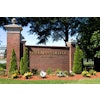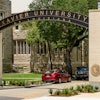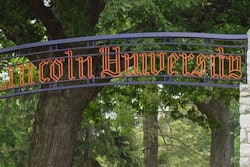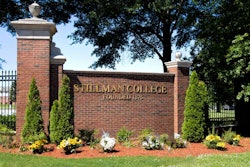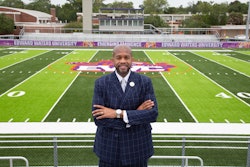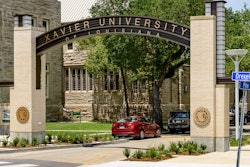From the medium-security prison where he’s been incarcerated since 2009, Robert M. Williams has continued to nurture a boyhood dream of designing and selling the sartorial finery he’d admired in glossy magazines and on the bodies of folks with a certain income.
“It’s going to be like Ralph Lauren’s Polo. On that level. That’s all I can say about it right now,” says Williams, 26, convicted of robbery, murder and attempted murder — major crimes, he adds, that he abetted, when he was 15, but didn’t actually commit.
Williams was discussing his wayward teenage years and his planned future in fashion, just moments before a piped-in version of “Pomp and Circumstance” filled a makeshift auditorium at the Arkansas Department of Corrections’ Wrightsville Unit. That anthem kickstarted a November evening’s college commencement for Williams, 22 other incarcerated persons and two individuals who’d been recently released from prison and, under an Obama-era pilot project, earned their associate degrees while behind bars.
“All God’s children have value,” says Dr. O. Jerome Green, at the top of that ceremony marking 400-student Shorter College as the first historically Black campus and the third campus of any sort to confer degrees through former President Obama’s Second Chance Pell Grant experiment. With 69 participating colleges and universities nationwide, that endeavor launched in summer 2016 as part of a multi-pronged bid to give those leaving prison marketable and other every day skills that could prevent them from cycling back to incarceration.
“Our mission,” Green tells Diverse days before Shorter’s inaugural commencement for what he hopes will be a longstanding program for inmates, “is to create a bridge, moving people from impossibility to possibility.”
In addition to two year-institutions such as North Little Rock-based Shorter, four-year ones including Bard, Bennington and Holy Cross colleges and Auburn and Rutgers universities are Second Chance Pell pilot sites. Collectively, their programming aims to gauge the merits of resurrecting college curricula in prisons — given education’s potential to propel poor people, in particular, who disproportionately are counted in the criminal justice system — and financing that through income-based federal Pell Grants. A 1994 crime bill, approved by a Democratic-controlled Congress and signed by Democratic President Bill Clinton as crime rates were soaring, banned inmates who’d been enrolled in previous iterations of prison-based academics from getting federal Pell Grants. Lawmakers made that shift, despite research suggesting that a solid education is a hedge against poverty and criminality, and against those who’d already done prison time recommitting crimes once they went home again.
But in recent years, a bipartisan push for criminal justice reform has supplanted the previous tough-on-crime, bare-bones approach to prisoners, one that critics contend drove up already high prison costs and did little to show former inmates how to thrive socially and economically on the outside. President Trump and U.S. Secretary of Education Betsy Devos are among Second Chance Pell backers — there also are opponents — which reflects something about its appeal to a cross-section of legislators, business titans and others.

